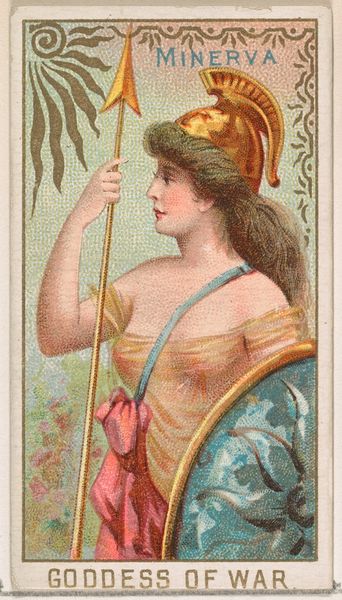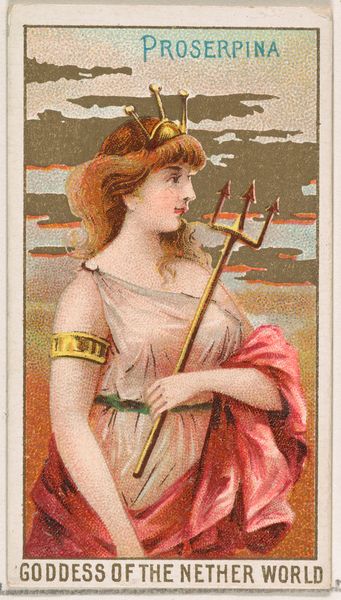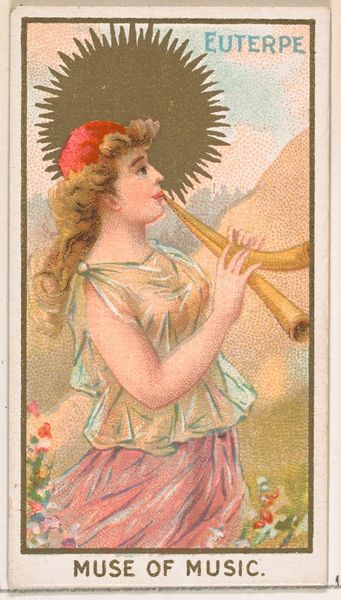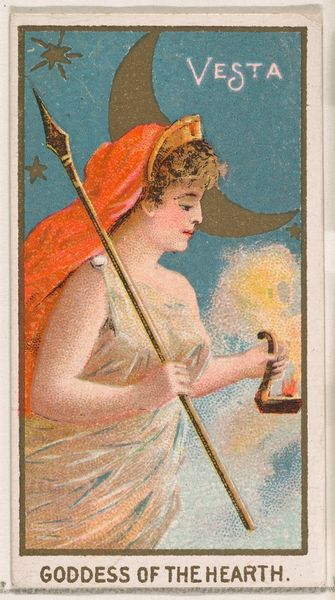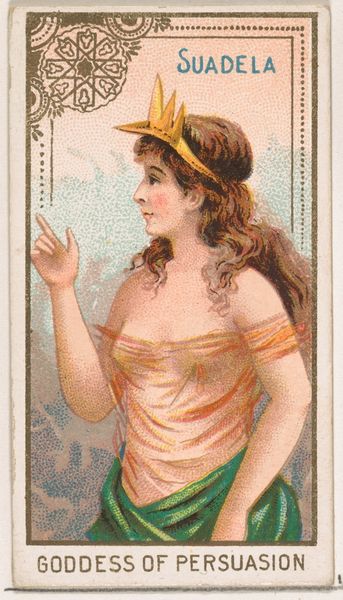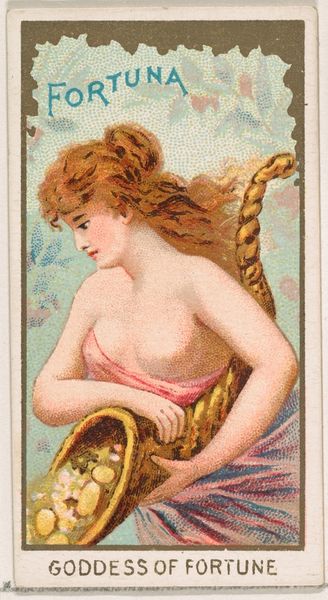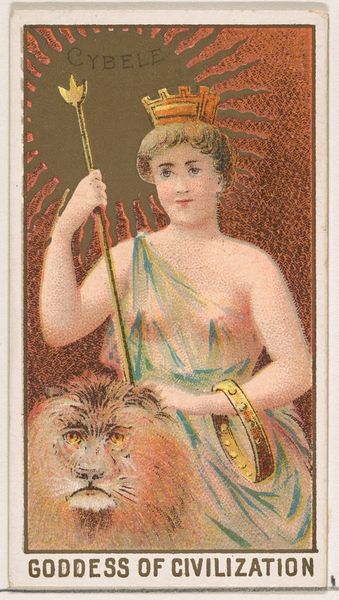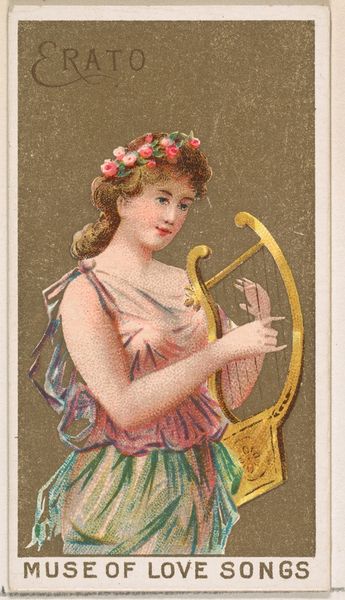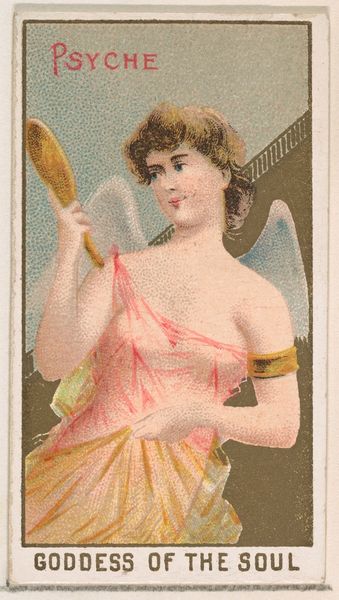
Fama, Goddess of Fame, from the Goddesses of the Greeks and Romans series (N188) issued by Wm. S. Kimball & Co. 1889
0:00
0:00
Dimensions: Sheet: 2 3/4 × 1 1/2 in. (7 × 3.8 cm)
Copyright: Public Domain
Curator: Here we have a color print titled "Fama, Goddess of Fame," part of the Goddesses of the Greeks and Romans series produced around 1889 by Wm. S. Kimball & Co. The artwork is a small, chromolithographic card, quite typical of the era, and features a depiction of the Roman goddess Fama. Editor: My initial reaction is that it possesses a gentle, almost ethereal quality. The soft color palette and delicate linework create a dreamy, romanticized atmosphere. There's a certain naiveté, a Victorian idealism perhaps? Curator: I think that naiveté is linked to Romanticism’s visual language which favors softened forms and gentle color gradients in this piece. Focusing on the formal aspects, the composition is quite interesting; the figure is centrally positioned, framed by decorative elements at the top, drawing the eye directly to her. Note the detail in rendering the instrument. Editor: Let’s consider how the depiction of Fama, with her wings and golden trumpet, aligns with contemporary gender roles. The card situates Fama within the domestic sphere. Simultaneously the card participates in a project of class aspiration as such objects circulated mostly among middle class families. Curator: Indeed. The allegorical subject matter itself—the concept of Fame—was culturally potent. The print, given its materials and scale, likely participated in constructing fame as something achievable, if perhaps only aspirationally so, for a consumer base within the evolving visual culture of the late 19th century. Editor: It makes one wonder, too, about the power dynamics inherent in disseminating "fame." Who gets to decide who becomes famous and on what terms? Even back then, these systems of recognition and visibility were rarely equitable. The symbolism and its ties to notions of legacy and renown... how exclusive were those notions, really? Curator: That’s a fascinating consideration, as Fama, historically, delivered the messages of gods like Zeus. Her trumpet pierces the mundane veil that is a commoner's life to introduce an awareness of higher beings. It democratizes fame even as it introduces a pantheon. The artist, Kimball & Co, flattens those tensions here in its aesthetic. Editor: I suppose these pieces were never really meant to interrogate those structures. But examining how "fame" was visually packaged and sold helps us to understand something about who it was, and still is, for. Curator: A fruitful analysis, for sure. There's always more than meets the eye in these seemingly simple pieces. Editor: Indeed, an ostensibly decorative image reveals social commentary on its historical moment.
Comments
No comments
Be the first to comment and join the conversation on the ultimate creative platform.
